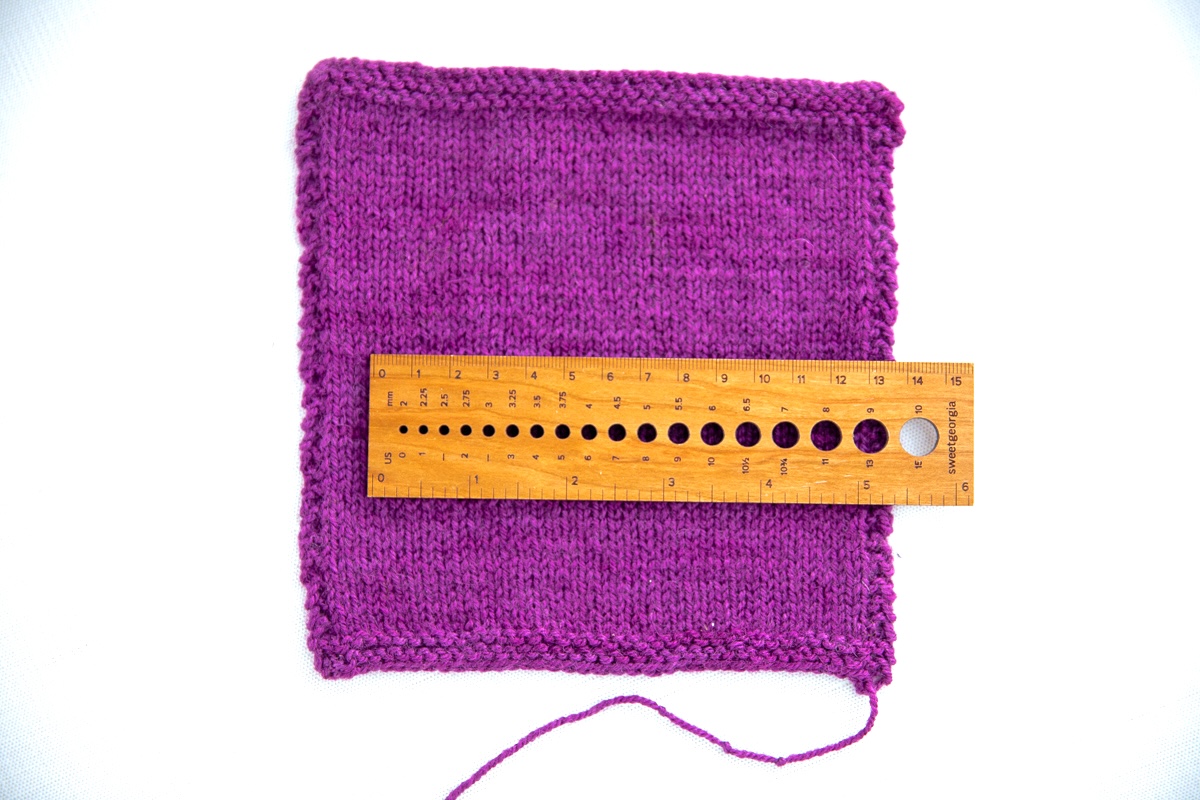Imperial vs. Metric Gauge in Knitting Patterns: The Conversion Conundrum
Gauge is important in knitting as it affects the final size and fit of the project. However, imperial vs metric measurements in knitting patterns can cause a bit of conversion conundrum for even the most advanced knitter. Let’s see if I can explain what’s going on with the math and what it means for your gauge and pattern results.
Imperial vs Metric Gauge
Imperial gauge, predominantly used in the United States and some other countries, measures stitches and rows per inch. For example, a pattern may require a gauge of 20 stitches and 30 rows per 4 inches using a specific yarn and needle size.
On the other hand, the metric gauge, commonly used in European, Canadian, and other international parts of the world, measures stitches and rows per centimetre. In this system, the pattern may specify achieving a gauge of 20 stitches and 30 rows per 10 centimetres.
Neither system is wrong, but confusion can occur when the unit of conversion is not quite… mathematically correct. And the reason it isn’t mathematically correct is because of a standard that was established long ago, which is “gauge measured over 4 ” / 10 cm.”
Conventional Pattern Standard
We know that 4 inches does not equal 10 centimetres. A mathematically correct conversion would multiply 4 by 2.54 to get 10.16 centimetres. The knitting conversion multiplies 4 by 2.5 to get the metric results.
This decision to use 2.5 instead of the exact 2.54 for conversion in knitting patterns is rooted in practicality and convenience. The conversion factor of 2.5 is a good match for knitting patterns, which typically use whole numbers for knit and purl stitches. With 2.5, pattern designers and knitters can make calculations smoothly and efficiently. The good news is that knit fabric is wonderfully forgiving, so this small tweak doesn’t result in a huge problem.

Let’s Look at a Practical Example:
If the pattern says 20 sts = 4 inches / 10 cm, so that’s 5 sts per inch or 2 sts per cm.
- Imperial with conversion to metric:
100 sts divided by 5 stitches per inch = 20 inches x 2.5 = 50 cm - Metric:
100 divided by 2 stitches per cm = 50 cm
vs
If you tried to go with the true mathematical conversion of 10.16, those same 20 sts in 4 inches would equal = 1.96850394 per cm.
- True mathematical conversion to metric:
100 sts divided by 5 stitches per inch = 20 inches
20 inches x 2.54 = 50.8 cm - True mathematical in metric:
100 divided by 1.96850394 stitches per cm = 50.7999 cm
I mean, overall, you’re not looking at an enormous difference, BUT you have to admit that the pattern standard is a LOT easier to measure. Grin.
Long Story Short
To ensure a successful knitting project, always take the time to swatch and measure your gauge before starting. Using the recommended yarn and needle size in the pattern, knit a sample square that is larger than the specified gauge measurement. Then, count the number of stitches and rows within the measurement, comparing it to the pattern’s requirements. Adjust your needle size accordingly if your gauge is too loose (more stitches and rows) or too tight (fewer stitches and rows).
Long story short, when converting to metric or following the metric measurements of a pattern, always use 2.5 instead of 2.54. Make sure your knitting projects fit and look great by accurately converting and paying attention to measurement units. Happy knitting!
Join our online community in the School of SweetGeorgia forums or on the SweetGeorgia Discord channel.
Original publication: August 31st, 2023; Refreshed: May 6th, 2025
The post Imperial vs. Metric Gauge in Knitting Patterns: The Conversion Conundrum appeared first on SweetGeorgia Yarns.
Comments
Post a Comment